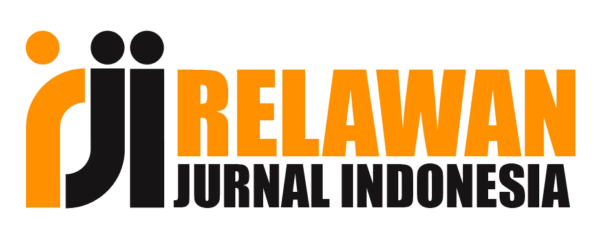AUTHENTIC ASSESSMENT BASED ON TEACHING AND LEARNING TRAJECTORY WITH STUDENT ACTIVITY SHEET (SAS) ON BASIC PHYSICS COURSES
Abstract
Abstrak
Tujuan penelitian ini untuk mendapatkan profil capaian pembelajaran dengan mennggunakan model Authentic Assessment Based on Teaching Learning Trajectory (AABTLT) with Student Activity Sheet (SAS) pada mata kuliah Fisika Dasar 1. Metode yang digunakan weak experiment dengan the one shoot case study design, yaitu ada dua kelompok mahasiswa yang diberi perlakuan presentasi-diskusi AABTLT with SAS pada materi gerak satu dimensi. Sampel penelitian adalah 70 orang mahasiswa yang mengikuti kuliah Fisika Dasar Instrumen penelitian yang digunakan adalah SAS yaitu daftar jawaban mahasiswa terhadap pertanyaan, instruksi dan tagihan selama proses perkuliahan. Data yang diperoleh dari SAS akan dianalisis secara kuantitatif sederhana dan diinterpretasikan dengan teknik kualitatif. Penelitian ini menyimpukan bahwa (1) perkuliahan dengan presentasi dan penyajian model AABTLT dengan SAS dapat menggambarkan keefektifan, (2) terdapat perbedaan tingkat efektifitas capaian pembelajaran antara kedua kelompok mahasiswa kurang dari 10%.
Kata Kunci: Authentic Assessment Based on Teaching Learning Trajectory (AABTLT); Fisika Dasara; Student Activity Sheet (SAS)
Abstract
The purpose of this research is to get the learning achievement profile by using the Authentic Assessment Based on Teaching Learning Trajectory (AABTLT) model with the Student Activity Sheet (SAS) in 1st Basic Physics Course. The method used by the weak experiment with the one shoot case study design, there were two groups of students who were treated with AABTLT-SAS presentations on one-dimensional motion material. The sample of research is 70 students who attended 1st Basic Physics. The research instrument used is SAS which is the list of student answers to questions, instructions, and bills during the lecture. Data obtained from SAS will be analyzed in a simple quantitative manner and interpreted with qualitative techniques. This study concludes that (1) lectures with presentation and presentation of AABTLT model with SAS can describe the effectiveness of Basic Physics, (2) there is the difference of effectiveness level of learning achievement between both groups of students less than 10%.
Keywords: Authentic Assessment Based on Teaching Learning Trajectory (AABTLT); Basic Physics; Student Activity Sheet (SAS)
Full Text:
PDF (Bahasa Indonesia)References
Linda Darling-Hammonda, & Snyder, J. 2000. Authentic assessment of teaching in context. Teaching and Teacher Education, 16(5–6), 523–545. http://doi.org/https://doi.org/10.1016/S0742-051X(00)00015-9
Elliot, C., 2007. Action Research: Authentic learning transforms student and teacher success.
Maria Ariasa, A., & A.Davisb Elizabeth. 2017. Supporting children to construct evidence-based claims in science: Individual learning trajectories in a practice-based program. Teaching and Teacher Education, 66, 204–218. http://doi.org/https://doi.org/10.1016/j.tate.2017.04.011
Timothy F Slater. 1996. Portfolio assessment strategies for grading first-year university physics students in the USA. Physics Education, 31(2), 329. http://doi.org/https://doi.org/10.1088/0031-9120/31/5/024
Chr.Th.Nicolaou, & C.P.Constantinou. 2014. Assessment of the modeling competence: A systematic review and synthesis of empirical research. Educational Research Review, 13, 52–73. http://doi.org/https://doi.org/10.1016/j.edurev.2014.10.001
Dinthera, M., Dochya, F., & Segers, M. 2015. The contribution of assessment experiences to student teachers’ self-efficacy in competence-based education. Teaching and Teacher Education, 49, 45–55. http://doi.org/https://doi.org/10.1016/ j.tate.2015.02.013
Sztajn, P., Confrey, J., Wilson, H., & Edgington, C. 2012. Learning Trajectory Based Instruction Toward a Theory of Teaching. SAGE Journal, 41(5), 147–156. http://doi.org/https://doi.org/10.3102/0013189X12442801
Rule, A. C. (State U. of N. Y. A. O. 2006. Editorial: The components Authentic Learning Overview. Journal of Authentic Learning, 3(1), 1–10. http://doi.org/10.1080/02680510500467866
Wiyono, K., Setiawan, A., & Paulus, C. T. (2012). Model Multimedia Interaktif Berbasis Gaya Belajar Untuk Meningkatkan Penguasaan Konsep Pendahuluan Fisika Zat Padat. Jurnal Pendidikan Fisika Indonesia, 8(1).
Knoblauch, H. (2008). The performance of knowledge: Pointing and knowledge in Powerpoint presentations. Cultural sociology, 2(1), 75-97.
Apperson, J. M., Laws, E. L., & Scepansky, J. A. (2008). An assessment of student preferences for PowerPoint presentation structure in undergraduate courses. Computers & Education, 50(1), 148-153
Asowayan, A. A., Ashreef, S. Y., & Omar, S. H. (2017). A Systematic Review: The Next Generation Science Standards and the Increased Cultural Diversity. English Language Teaching, 10(10), 63.
Birzina, R., & Cedere, D. (2017). The first year students’ perceptions of higher studies: a case of University of Latvia. In Rural Environment. Education. Personality.(REEP). Proceedings of the Inte
Ryan, D.W., 2017. Combining systems thinking, model-based reasoning, and project-based learning to advance student agency, increase student engagement and understanding, and provide an authentic and accurate method of assessing student competencies in a high school aquatic science course (Doctoral dissertation).
Wang, T.Y. and Hsieh, F.J., 2017. Predictors of the Teaching Readiness of Future Secondary Mathematics Teachers: A Comparison of Singapore, Taiwan, and the United States. In What Matters? Research Trends in International Comparative Studies in Mathematics Education (pp. 165-185). Springer International Publishing
Campbell, M. 2006. The Effects Of The 5e Learning Cycle Model On Students’ Understanding Of Force And Motion Concepts. Electronic Theses and Dissertations. Retrieved from http://purl.fcla.edu/fcla/etd/CFE0001007
Gatlin, L., & Edwards, R. 2007. Promoting Authentic Learning through a Peaceful and Positive Perspective. Journal of Authentic Learning, 4(1), 1–8. Retrieved from https://dspace.sunyconnect.suny.edu/bitstream/handle/1951/41484/1 Gatlin Edwards Editorial Peaceful Perspective p1-8.pdf?sequence=1&isAllowed=y
DOI: https://doi.org/10.17509/wapfi.v3i1.10373
Refbacks
- There are currently no refbacks.
Copyright (c) 2018 Wahana Pendidikan Fisika
The Journal Wahana Pendidikan Fisika http://ejournal.upi.edu/index.php/WapFi/ is licensed under a Creative Commons Attribution-ShareAlike 4.0 International License
The Journal WaPFi (Wahana Pendidikan Fisika).
All rights reserverd. pISSN 2338-1027 eISSN 2685-4414
Copyright © Faculty of Mathematics and Science Education (FPMIPA) Universitas Pendidikan Indonesia (UPI)









